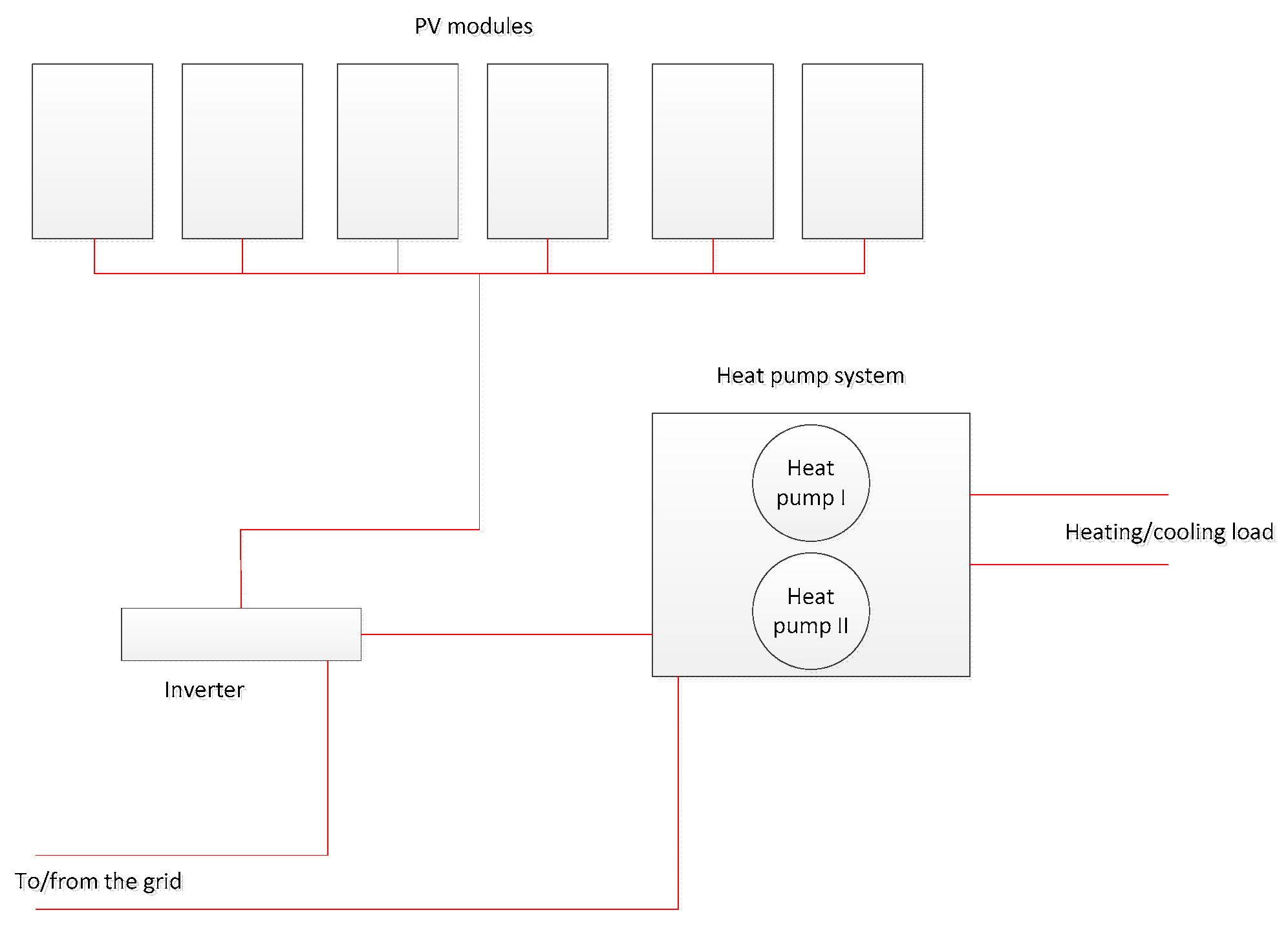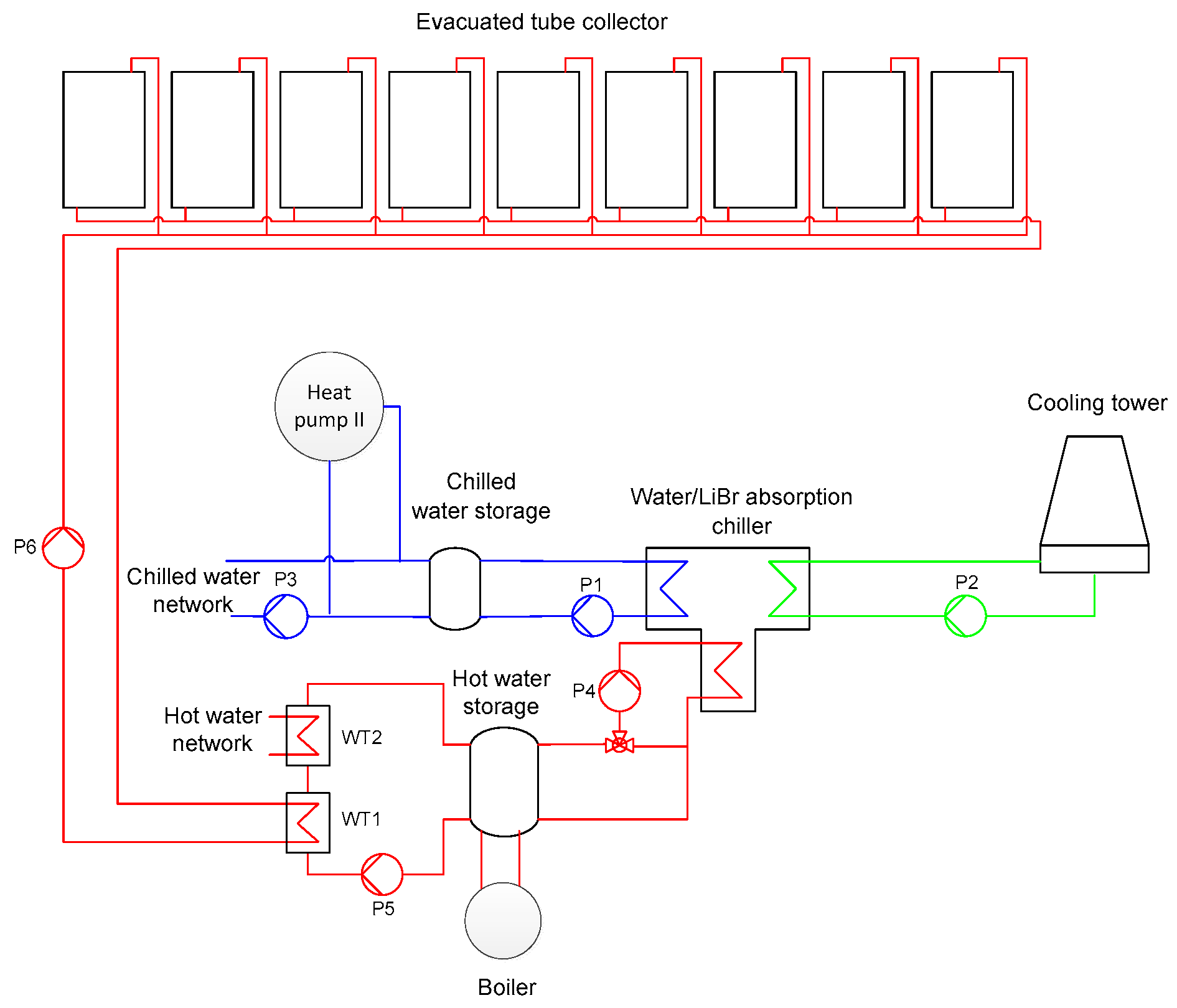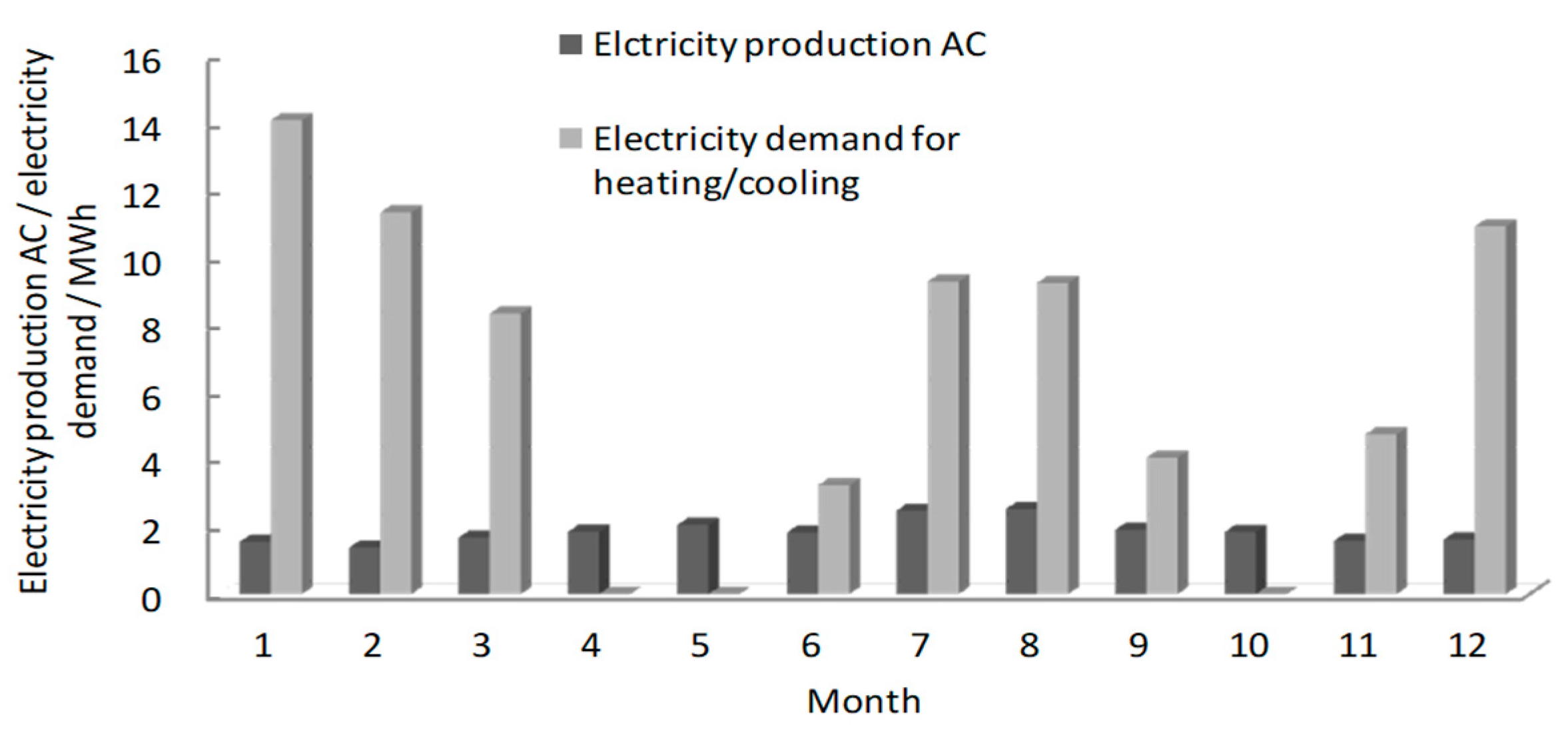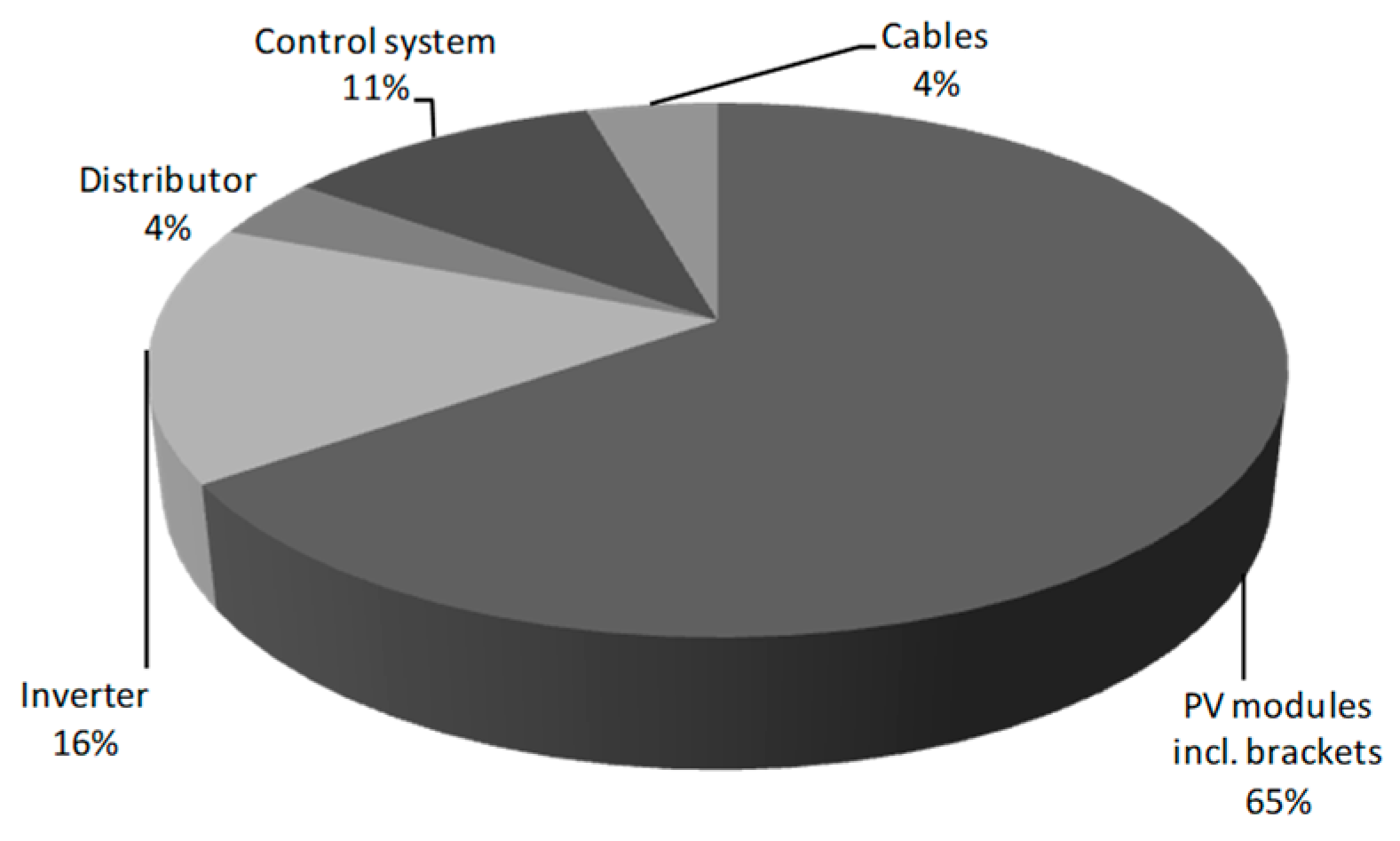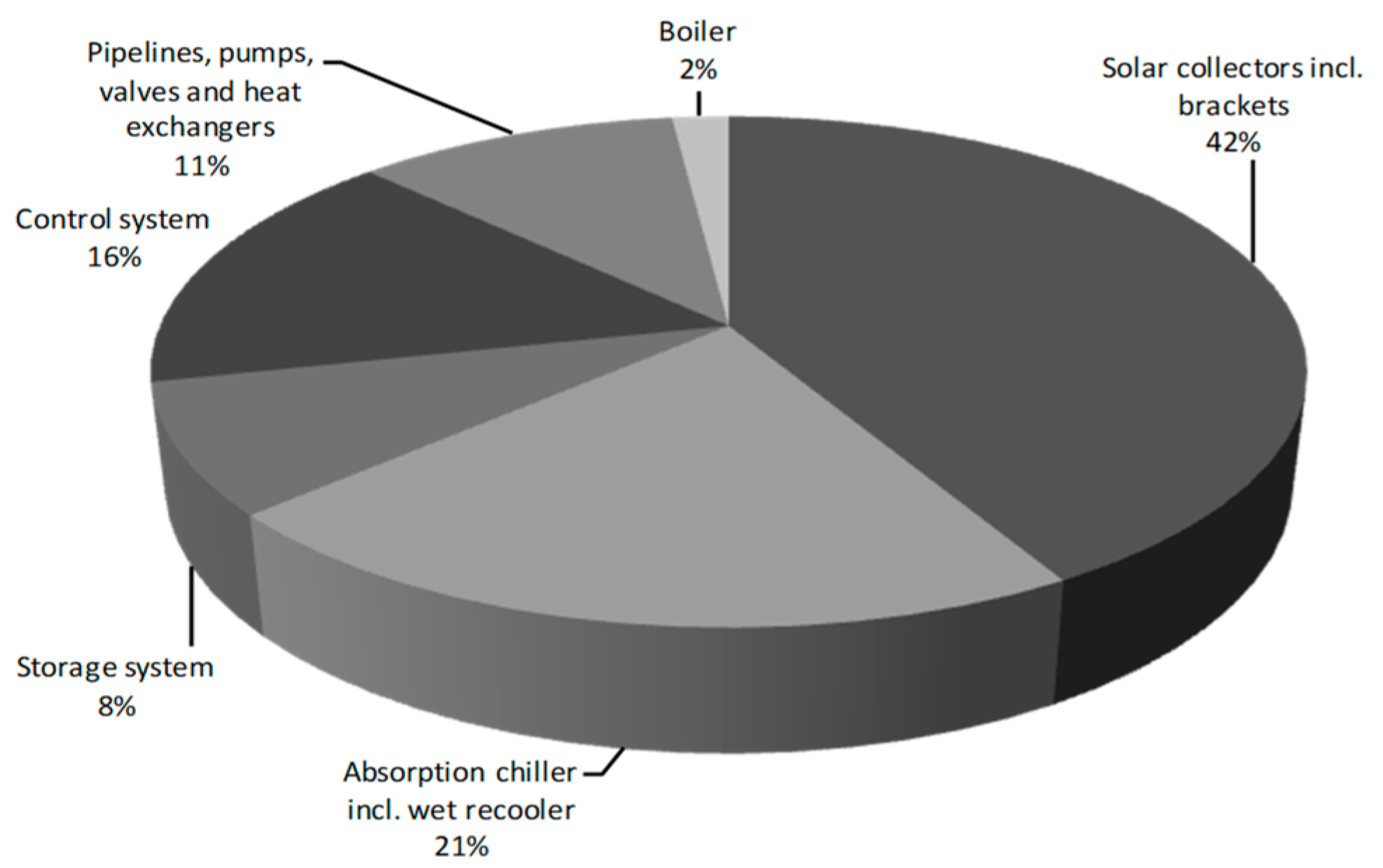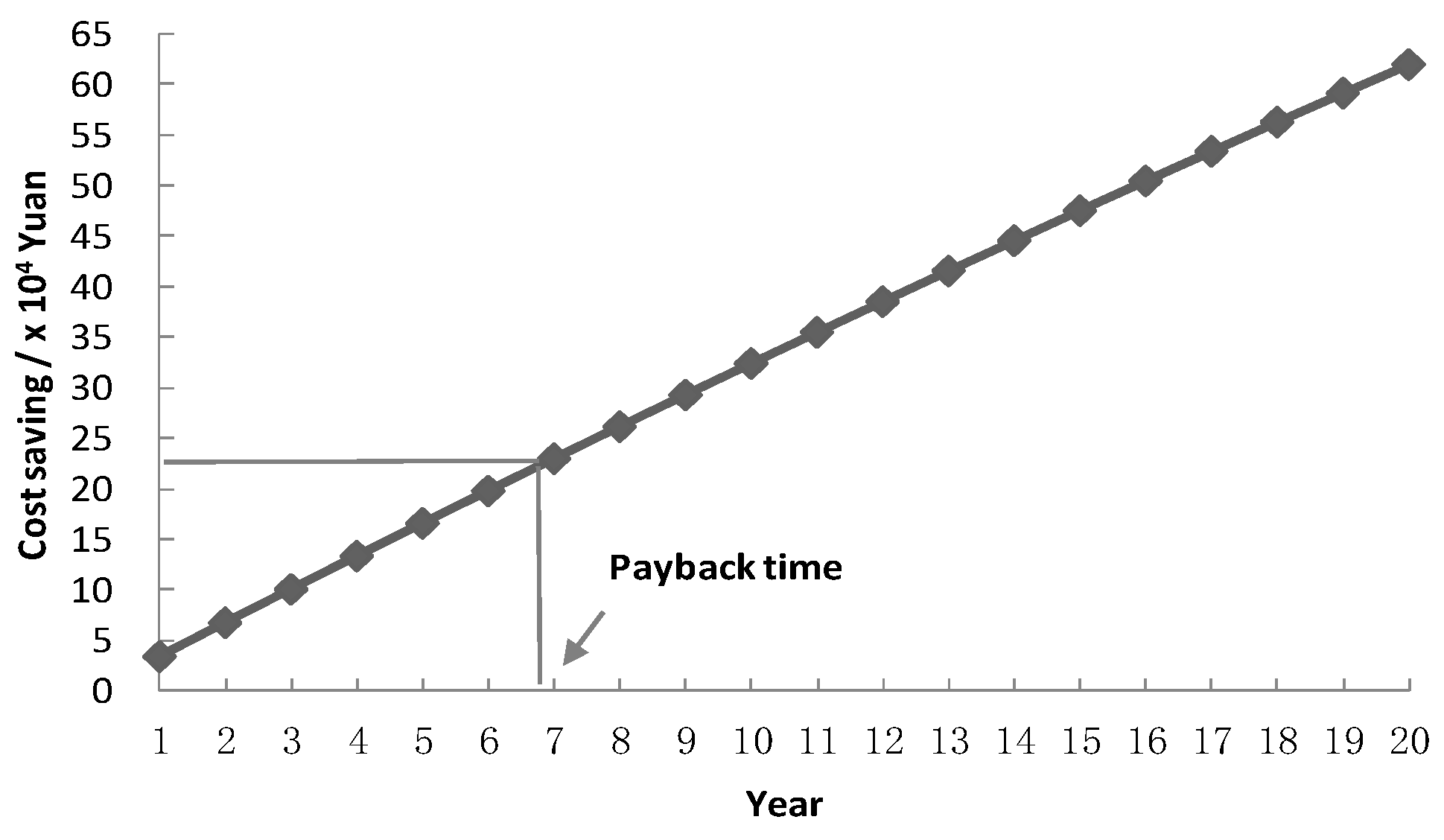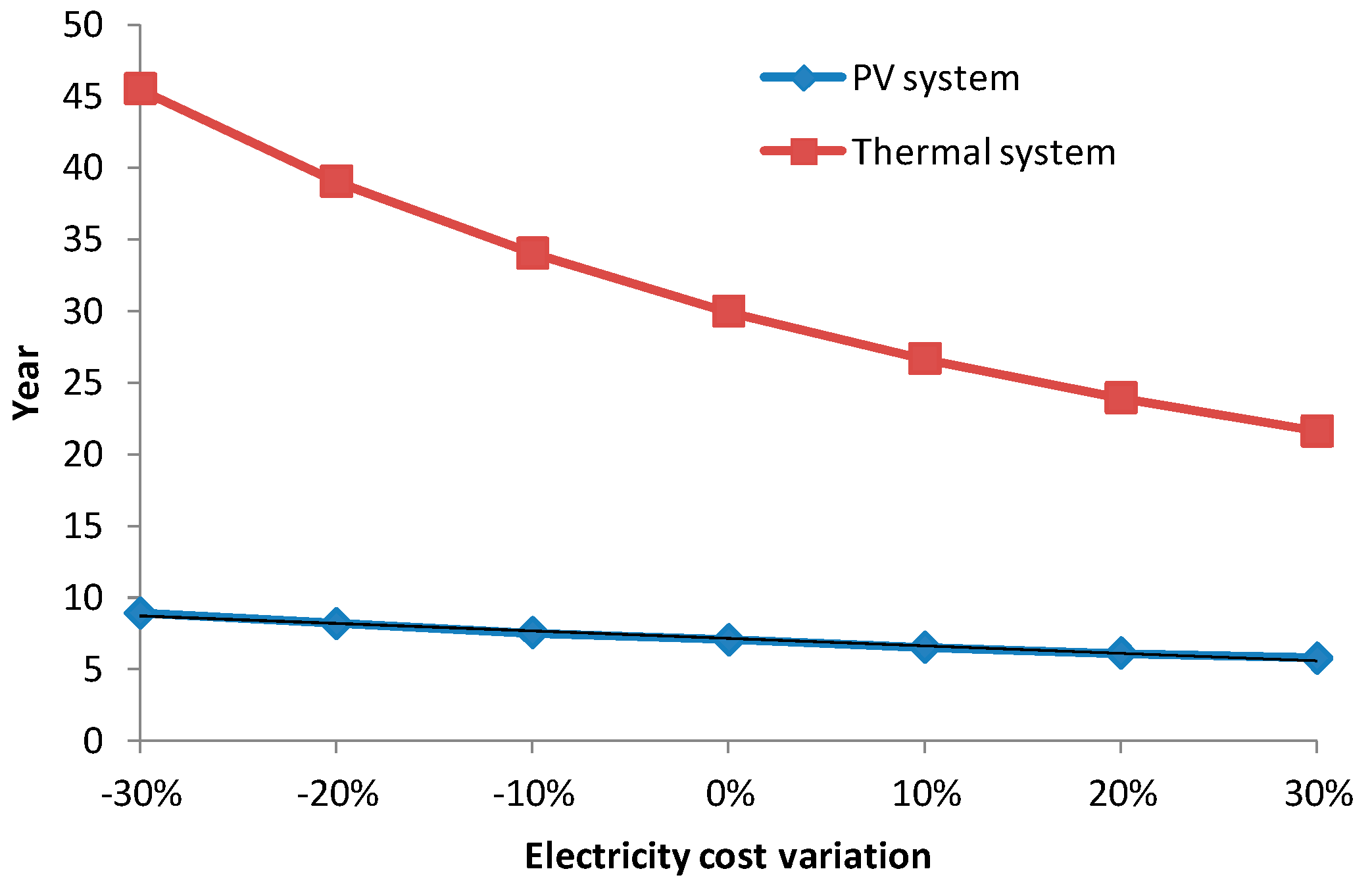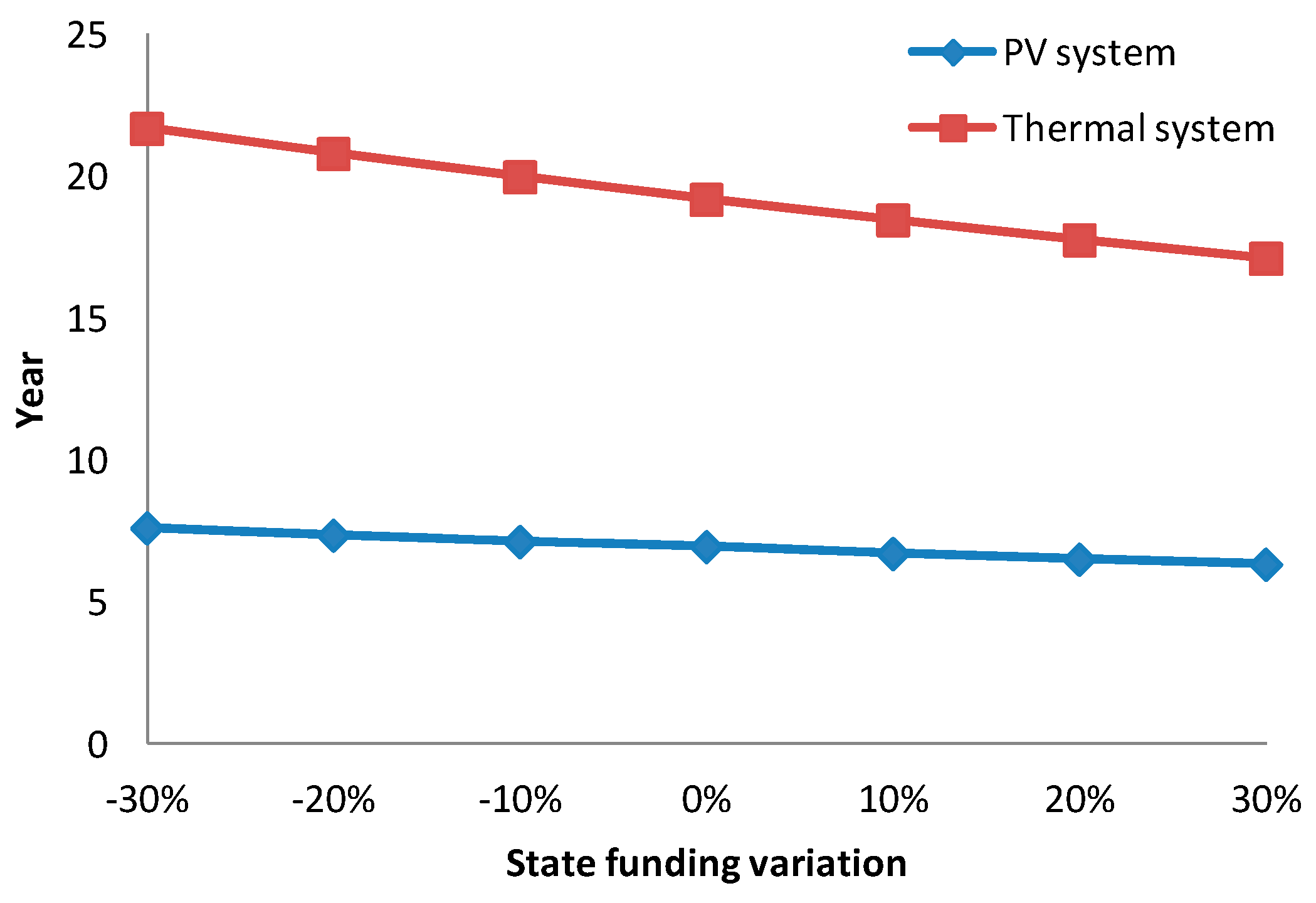1. Introduction
In recent years, building energy consumption has been steadily increasing due to recent economic development and improved living standards in China. Building energy consumption accounts for 30% of total energy consumption in China [
1], 50–60% of which is attributable to air conditioning units in public buildings located in the hot-summer and cold-winter zone [
2]. Conventional air conditioning systems use electricity to drive a compressor that circulates a refrigerant, absorbing and removing heat from a space. A rapid increase in both the number and use of air conditioning units results not only in a considerable increase in power consumption, but also in a power peak demand during the hottest hours of summer days, which has a strong impact on the existent power grid and often results in power blackouts during this time.
Solar cooling technology has been developed to reduce the increased electricity consumption associated with air conditioning and to shift the peak load on hot summer days. This technology uses solar energy to drive a refrigerator for cooling the space. Compared to conventional compressed air conditioning systems, solar cooling systems have the following advantages:
Cooling capacity increases in proportion to rising solar radiation, concurrent to demand for cooling in summer;
Solar energy is used to reduce the consumption of primary energy and consequently reduces greenhouse gas emissions.
There are two methods to use solar energy for air conditioning applications, namely solar photovoltaic (PV)-based electrical cooling systems and collector-based thermal cooling systems. Many studies have been carried out to promote the development of solar cooling techniques.
Hartmann et al., present a comparison of solar thermal and solar electric cooling for a typical small office building exposed to two different European climates (Freiburg and Madrid) [
3]. They found that, for large collector areas, up to 40% (Freiburg) and 60% (Madrid) of primary energy can be conserved via a solar thermal system and solar electrical system. To do so, the collector area of the solar thermal system must be more than six times larger than the corresponding solar electrical collector field to achieve the same amount of saved primary energy.
Boopathi Raja et al. review the past efforts of solar assisted-single effect vapor absorption cooling systems using a LiBr-H
2O mixture for residential buildings [
4]. Their results suggest that two important parameters determine the most economical solar cooling systems. They are (1) the cost of the solar collection and storage technologies and (2) the performance of the cooling technologies.
Noro et al., evaluated the potential of integrated solar absorption cooling and heating systems with sensible vs. PCM (Phase Change Material) heat storage tanks by TRNSYS tool [
5], which is an graphically based software environment used to simulate the behavior of transient systems. An economic analysis reveals that the greater investment costs of PCM technology are justified in a solar cooling plant only in the case of a higher natural gas tariff or a significantly lower PCM cost.
Beccali et al. compared the energy and performance of two families of solar-assisted cooling systems (with solar thermal or PV) to conventional ones by means of the Life Cycle Assessment (LCA) methodology [
6]. The results indicate that the systems with the PV grid-connected plant frequently performed best.
Eicker et al., compared the primary energy and economy of two solar cooling systems with the simulation programs TRANSOL and INSEL [
7], which is a dynamic simulation model for transport and transformation of solutes in soils and a simulation system for renewable electrical energy supply systems respectively. One cooling system was a compression cooling machine fed with electricity provided by photovoltaic (PV) modules; the second an absorption cooling machine operated by solar-collected heat. The results show that the photovoltaic cooling system is favorable in comparison with the thermal solar cooling system. The initial investment costs strongly influenced both the payback and cost of saved primary energy.
Izquierdo et al., carried out theoretical–experimental research by feeding a reversible air–water pump through a solar photovoltaic (PV) micro grid [
8]. It was found that the system could maintain a comfortable internal temperature during days with values of minimum-maximum outdoor temperatures between 1 °C and 16 °C. The global efficiency was about 18.2%.
Roselli et al. investigated a solar electric-driven heat pump for an office building located in southern Italy, which resulted in low energy demand compared to the most common type of Italian buildings [
9]. It was found that the system based on the solar electric-driven heat pump resulted in a saving of primary energy and equivalent CO
2 emission reduction of about 81% when compared to the reference conventional system based on a boiler fueled by natural gas and an electric-driven chiller.
Khan et al., developed configurations based on TRNSYS models to evaluate the thermal performance of a solar-based single effect absorption cooling system with a peak cooling capacity of 298 kW [
10]. Simulation results showed a marked difference of up to 30% between monthly collector efficiencies of evacuated tube collectors (ETCs) and a flat plate solar collector (FPC). It can be concluded that FPC is not a preferred choice for current systems, due to the requirement of a high driving temperature of over 100 °C.
Although many studies have been carried out, solar cooling systems have not been widely used due to the high investment cost and a long payback period. There have been less than 10 demonstration projects built and operated in China. Most of them are solar thermal cooling systems. A new system has been planned for the city of Ningbo, Zhejiang Province, which is located in the hot-summer and cold-winter zone in China. To determine which technology will be used, the authors have simulated different solar cooling systems by using the Vela Solaris Polysun® tool, comparing both technical and economic factors.
